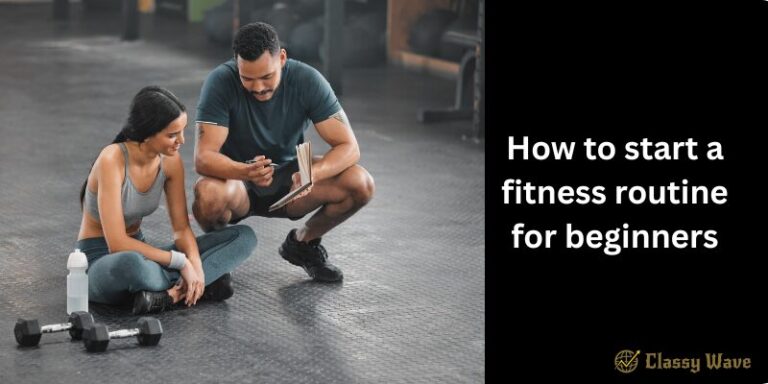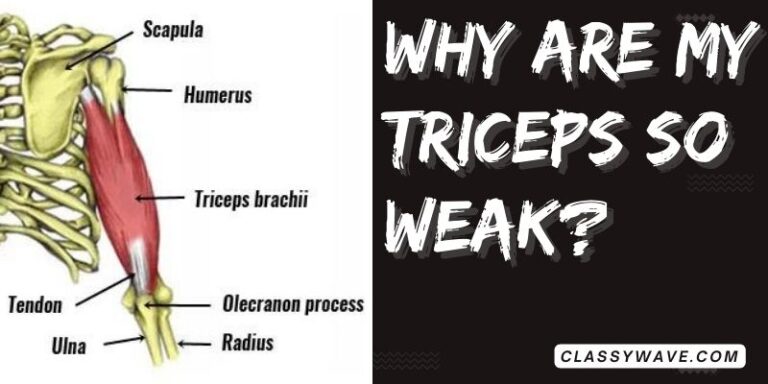Why Form Matters in Every Exercise | Classy Wave
When it comes to working out, many people focus on how much weight they can lift, how many reps they can complete, or how fast they can finish a set. But there’s one crucial aspect that often gets overlooked — proper form. Your exercise form isn’t just about looking good at the gym; it’s the foundation of safe, effective, and long-term fitness. Whether you’re lifting weights, doing yoga, or performing bodyweight exercises, maintaining correct form determines the success of your workout.
What Is Exercise Form?
Exercise form refers to the correct posture, movement pattern, and technique used during physical activity. It ensures that each muscle group is engaged properly while minimizing strain on joints, tendons, and ligaments. Think of it as the blueprint of your workout — without it, everything else falls apart.
The Importance of Proper Form
1. Prevents Injuries
Poor form is the leading cause of workout-related injuries. When you perform exercises incorrectly, you place unnecessary stress on your muscles and joints. For example, rounding your back during deadlifts can cause lower back pain, while incorrect knee positioning in squats can lead to ligament damage. Maintaining correct form ensures your body moves safely and efficiently.
2. Maximizes Muscle Activation
Every exercise is designed to target specific muscles. Using proper form helps engage the right muscle groups, ensuring you get the most out of each rep. When your form is off, other muscles compensate — meaning you’re working harder but seeing fewer results.
3. Improves Workout Efficiency
Good form allows you to perform each movement with better control and precision. This not only boosts performance but also helps you progress faster. When your technique is right, every rep counts, and you won’t need endless repetitions to see improvements.
4. Builds Better Strength and Endurance
When you maintain proper form, your muscles work through their full range of motion, helping build balanced strength and flexibility. Over time, this leads to better posture, stronger stabilizer muscles, and improved overall endurance.
5. Promotes Long-Term Progress
Bad habits in exercise form can limit your long-term growth. Poor mechanics may not cause immediate pain but can lead to chronic issues over time. On the other hand, mastering correct form early ensures sustainable progress and helps you stay active for years.
Common Form Mistakes and How to Fix Them
1. Rounding the Back During Lifts
Mistake: Bending your spine while lifting weights puts pressure on your lower back.
Fix: Keep your spine neutral and core engaged. Hinge from your hips, not your waist.
2. Locking Your Joints
Mistake: Straightening your elbows or knees completely at the end of a movement can strain joints.
Fix: Keep a slight bend in your joints to maintain tension in the muscles.
3. Using Momentum Instead of Muscle
Mistake: Swinging weights or rushing reps to complete a set faster.
Fix: Slow down. Focus on controlled movements and proper muscle contraction.
4. Poor Breathing Technique
Mistake: Holding your breath during an exercise limits oxygen flow.
Fix: Inhale during the easier phase and exhale during exertion (e.g., exhale when pushing or lifting).
How to Maintain Proper Form
1. Start Light
Always begin with lighter weights or bodyweight exercises. Once your form feels natural, gradually increase intensity.
2. Use Mirrors
Watching yourself in a mirror helps you correct misalignments and improve posture during exercises.
3. Engage Your Core
A strong core stabilizes your entire body. Tighten your abs slightly during every workout to support your spine and balance.
4. Get Professional Guidance
Working with a certified trainer or following trusted online tutorials can help you learn correct form for every exercise safely.
5. Record Your Workouts
Filming yourself is a great way to catch mistakes you might not feel during movement. Review and adjust as needed.
Why Good Form Is More Important Than Heavy Weights
It’s tempting to lift heavier or push harder to feel progress — but doing so with poor form often leads to setbacks. Using lighter weights with proper technique builds strength safely and effectively. Remember: quality over quantity. A single well-executed rep can be more beneficial than ten sloppy ones.
The Mind-Body Connection
Good form also enhances the mind-muscle connection — your ability to consciously engage the muscle you’re working on. When you focus on form, you feel each contraction and build stronger neurological control over your movements, leading to faster and better results.
Signs Your Form Might Be Wrong
- You feel pain instead of mild muscle fatigue.
- You’re not seeing progress despite consistent effort.
- You lose balance or stability during movements.
- You feel strain in joints rather than muscles.
If any of these sound familiar, pause your workout and reassess your technique.
How Proper Form Boosts Confidence
When you exercise with the right posture and control, you not only protect your body but also look and feel more confident. Proper form gives your movements grace and strength — and that confidence carries into other areas of life too.
Conclusion
Good form is the foundation of every effective workout. It’s the difference between building strength and causing injury, between short-term gains and long-term success. Whether you’re a beginner or a seasoned athlete, mastering form should always come before increasing weight or intensity. Take the time to learn, practice, and perfect your movements — your body will thank you.







